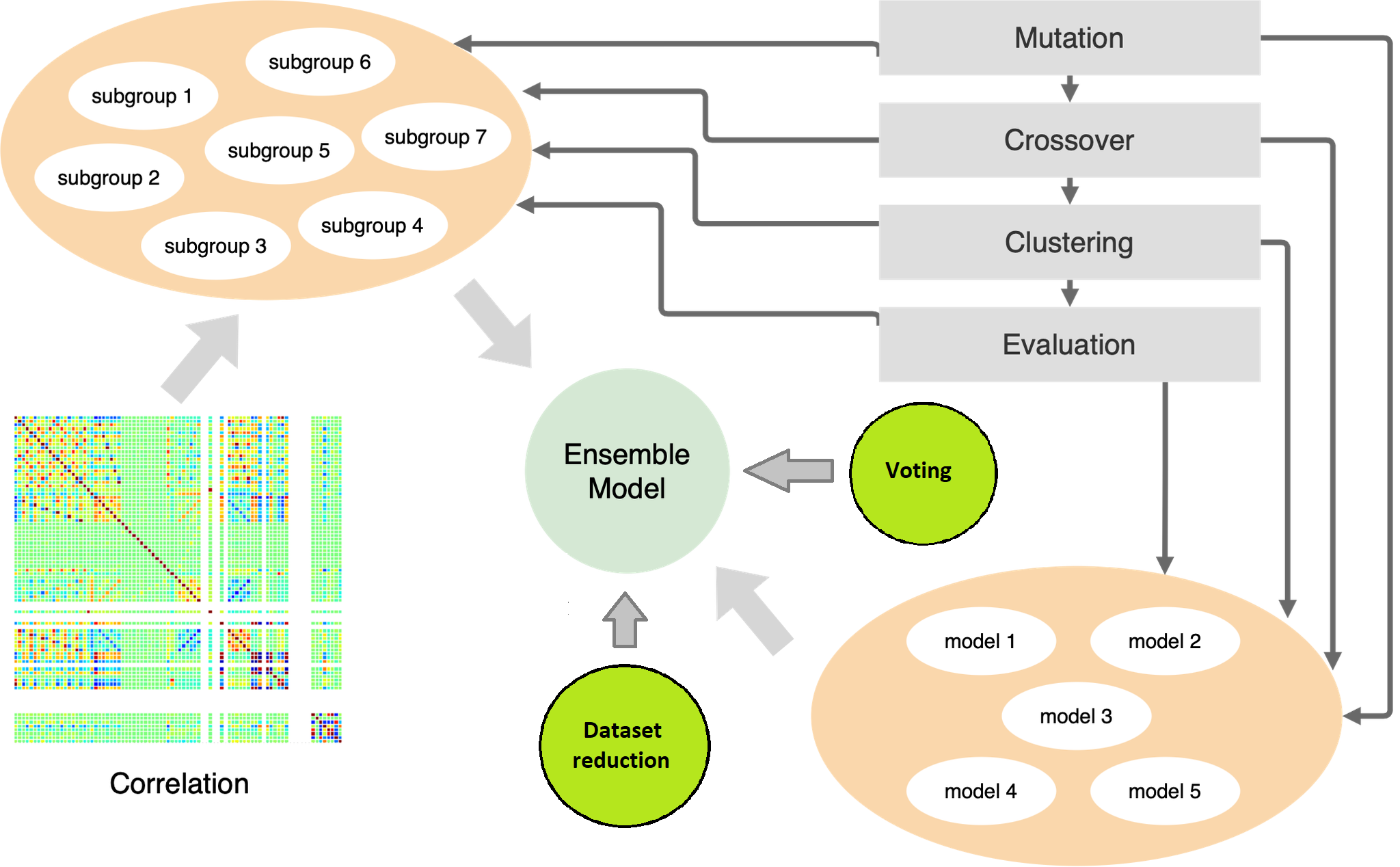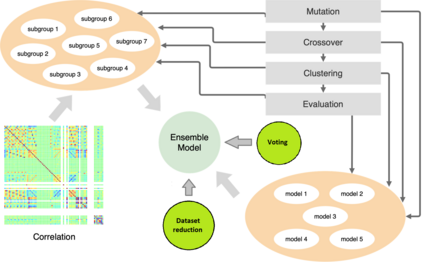The neuroevolution is one of the methodologies that can be used for learning optimal architecture during the training. It uses evolutionary algorithms to generate topology of artificial neural networks (ANN) and its parameters. In this work, a modified neuroevolution technique is presented which incorporates multi-level optimization. The presented approach adapts evolution strategies for evolving ensemble model based on bagging technique, using genetic operators for optimizing single anomaly detection models, reducing the training dataset to speedup the search process and performs non gradient fine tuning. The multivariate anomaly detection as an unsupervised learning task is the case study on which presented approach is tested. Single model optimization is based on mutation, crossover operators and focuses on finding optimal window sizes, the number of layers, layer depths, hyperparameters etc. to boost the anomaly detection scores of new and already known models. The proposed framework and its protocol shows that it is possible to find architecture in a reasonable time which can boost all well known multivariate anomaly detection deep learning architectures. The work concentrates on improvements to multi-level neuroevolution approach for anomaly detection. The main modifications are in the methods of mixing groups and single models evolution, non gradient fine tuning and voting mechanism. The presented framework can be used as an efficient learning network architecture method for any different unsupervised task where autoencoder architectures can be used. The tests were run on SWAT and WADI datasets and presented approach evolved architectures that achieve best scores among other deep learning models.
翻译:神经革命是用来在培训期间学习最佳结构的方法之一。 它使用进化算法来生成人工神经网络(ANN)及其参数的表层学。 在这项工作中, 介绍了一个包含多层次优化的经修改的神经进化技术。 介绍的方法调整了基于包装技术的演进混合模型的进化战略, 利用基因操作者优化单一异常检测模型, 减少培训数据集以加快搜索进程, 并进行非梯度微调。 多变异异常检测作为一种不受监督的学习任务, 是用来测试所介绍的方法的案例研究。 单一模型优化以突变、 交叉操作者为基础, 重点是寻找最佳窗口大小、 层、 层深度、 超参数等。 介绍的方法调整了基于包装技术的、 正在演进的混合组合模型, 拟议的框架及其协议表明, 在合理的时间内, 能够找到能够提升所有已知的多变异性异常现象检测的深层次学习结构。 工作集中于改进多层次神经进化方法, 以突变异性研究模型为基础, 进行非细化模型 。 主要的修改是用于变异化模型的变异化模型, 变异化模型, 用于变异化模型, 变异性测试, 变异性结构, 用于演化模型的系统化结构 用于不同的变式结构,, 变异性结构 用于不同的变式结构 用于不同的演化,, 变式结构 变式结构,, 变式结构 用于 变式演化结构 用于 用于 结构 变式演化, 变式结构 变式结构 变式结构,, 用于 变式系统化方法 变式结构 用于 变式 用于 变式 变式 变式 变式 变式 变式 变式 结构 变式 变式 变制 结构 结构 变式 变式 变制 变制 结构 变制 变制 变制 变制 变制 变制 变制 变制 变制 变制 变制 变制 变制 变制 变制 变制式 变制式 变制式 变制算法, 结构 结构 结构






